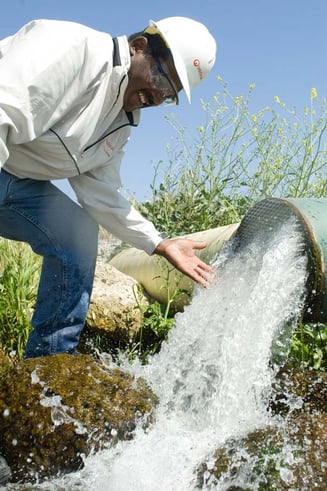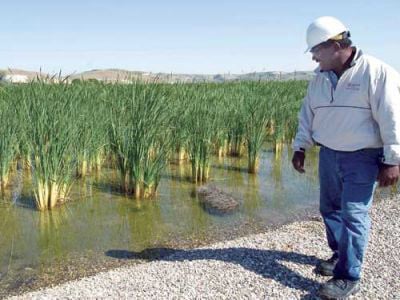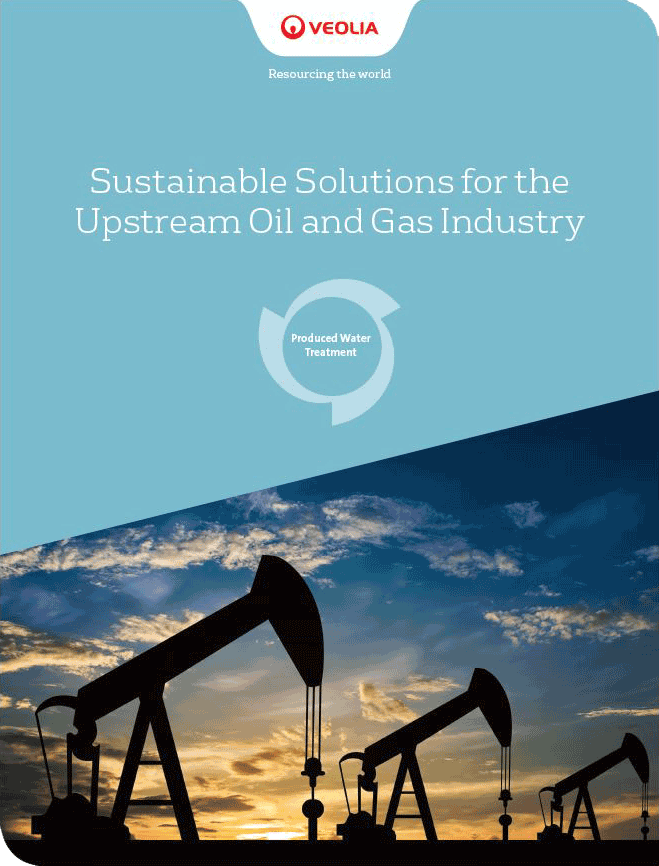The upstream oil and gas industry generates large quantities of produced water during exploration and production. We’re talking about 3 to 15 barrels of water for every barrel of oil.
The challenge for operators has long been what to do with all this water. The water generated is highly saline, which means it cannot simply be released into rivers and streams, and it is not suitable for fresh or waste water treatment facilities.
The question is: how can upstream oil and gas operators dispose of this water in a way that is cost effective, compliant with regulations, and environmentally sustainable? There are three ways that it can be accomplished currently, but only one creates the most positive, lasting environmental impact.
- Saltwater disposal wells (SWD's)
- Treatment for reuse
- Treatment for discharge
The most common way to deal with produced water
Currently, the majority of water generated by the upstream oil and gas industry is injected underground. Also known as saltwater disposal wells, this method entails placing the produced water deep in the Earth beneath the water table. About 90% of operators currently use saltwater wells to dispose of their water.
There are several problems with this method.
First, there are capacity limitations. There are only so many areas with the necessary geological formations and conditions where you can safely dispose of the water. Once a current well is full, you must find a new one to continue disposal.
The second is seismicity. There is a potential connection between high volume fluid injection and increased seismic activity. Areas in Texas, Oklahoma, and New Mexico have recently experienced higher instances of earthquakes potentially due to injection of produced water into SWD’s in the surrounding region.
The third is that the produced water is injected into the ground and essentially forgotten about when it may still have value to give us. In other words, the water byproduct could be put to further productive use. instead of sitting sealed deep underground.
That’s where the next two environmentally sustainable disposal methods come into play.
#1 Produced water treatment for reuse
One alternative disposal method for produced water is treating it for further use in drilling and completions. Reuse involves removal of particulates (oil, TSS, bacteria), scale formers (iron) and dissolved gas (H2S). The way this process works is by using oxidation, flotation, and filtration technologies to clean the water and make it suitable for reuse in hydraulic fracturing completion operations.
Treatment for reuse is valuable, because it minimizes SWD injection volumes substantially and the water is put to further use, lessening the industry’s dependence on freshwater for oil and gas exploration and production operations.
The drawback for this method is that it is only cost effective when you have active drilling operations in close-by locations with access.
#2 Treatment for discharge (the environmental goldmine)
A reliable alternate solution for produced water disposal method from an environmental standpoint is treating it for discharge.
There are wide reaching benefits of treating water for discharge:

- Minimize dependence on saltwater disposal wells – With concerns arising about seismicity and capacity, oil and gas operators can limit their reliance on disposal wells, protecting themselves in the event that rules and regulations concerning them change.
- Highly reliable treatment solution – Treatment for discharge utilizes proven technologies that are well experienced in treating produced water, providing a reliable solution with a high level of certainty and availability.
- Replenish natural streams and rivers – In areas where water is scarce, treatment for discharge has the potential to add large amounts of freshwater back into the environment and recharge the groundwater aquifer and natural sources.
- Turn produced water into a new revenue stream – Fresh water generated from the process can be sold to buyers as “A New Water Source” for use in agriculture, irrigation and for beneficial use in industries that require it.
If the goal is long-term sustainability and minimize dependency on SWD then treatment for discharge is the best commercial solution for disposal of produced water. The highly saline water starts as a byproduct but can then be treated and converted into fresh water for further productive use in a way that meets regulations, is safe for the environment, and helps replenish water in areas where it may be scarce.
Technologies that make treatment for discharge possible
There are three principal technologies used to treat produced water for discharge into the environment. Which one is used depends on the level of salinity in the water measured as total dissolved solids or TDS.

- Reverse osmosis membrane-based technology is used for water with a TDS of less than 25,000 mg/l. The benefit of this method is that it has a compact footprint , low power consumption and is highly cost effective for low TDS waters.
- MVR evaporation-based technology is employed for a TDS range of 25,000 to 125,000 mg/l and uses energy to heat and evaporate the water. This method is energy efficient and generates high quality treated water suitable for discharge and liquid brine waste suitable for SWD disposal.
- The crystallization method is used for a TDS range of 125,000 to 300,000 mg/l and treats the water by crystallizing the salt at low temperatures. Crystallization produces high quality water for discharge and a salt waste suitable for landfill disposal or beneficial use with further processing.
The sustainable way forward for producers
New innovations are creating new opportunities for oil and gas producers to make a positive environmental impact. And the best part is that these new disposal methods don’t just make environmental sense from a long term sustainability and ESG standpoint, but also minimizes risk significantly for O&G producers. Instead of disposing of a potentially valuable resource through SWDs, treating produced water for reuse or discharge generates a new water source for beneficial use and reduces the stress on the natural sources for freshwater.
Huge volumes of water can be treated and disposed of in an environmentally compliant way and even create potential new revenue streams. The sustainable path forward is here!
To learn more about produced water reuse and discharge, check out our upstream oil and gas brochure. It explains all the details and how you can implement these solutions for your operation.



